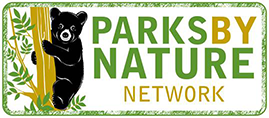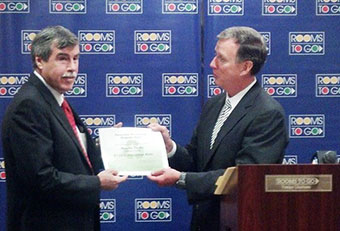[printfriendly]Pocket Ranger App Now Covers Beaches
The Florida Park Service has updated its Pocket Ranger app for smartphones to include every public beach access point in Florida, in addition to information about its 171 state parks and trails.

The app provides a comprehensive list of beach access points in each county, and the amenities each point offers, including boardwalks, parking spaces, restrooms, picnic pavilions and boat ramps. Each section features an overview of each of the region’s coastal counties and includes a list of state parks, coastal cities, rivers, paddling trails and other points of interest.
The app provides a comprehensive list of beach access points in each county, and the amenities each offers, including boardwalks, parking spaces, restrooms, picnic pavilions and boat ramps. Each section features an overview of each of the region’s coastal counties and includes a list of state parks, coastal cities, rivers, paddling trails and other points of interest.
The Florida State Parks Pocket Ranger app is available now on iTunes and Android Market by searching “Official Florida State Parks” and is identified under ParksByNature Network. It is also available on PocketRanger.com and is formatted as a Mobile Website: fl.pocketranger.com.
[su_divider]Water and Land Legacy Nears Deadline for Signatures
 With nearly half of the signatures required to get the Florida Water and Land Conservation Constitutional Amendment on the November 2014 ballot, supporters are kicking into overdrive. The statutory deadline is Feb. 1 but the campaign isn’t taking chances, shooting for Nov. 30 to be safe.
With nearly half of the signatures required to get the Florida Water and Land Conservation Constitutional Amendment on the November 2014 ballot, supporters are kicking into overdrive. The statutory deadline is Feb. 1 but the campaign isn’t taking chances, shooting for Nov. 30 to be safe.
“We have more than 4,000 individual volunteers and 330 conservation and civic organizations across the state,” said Pegeen Hanrahan, legacy campaign manager. “If everyone who signed up to help just got a few hundred more signatures, it would make a huge difference.”
The campaign is also raising funds to pay professional signature gatherers, so Hanrahan feels confident that the necessary signatures will be collected in time.
The petition, available online at www.floridawaterlandlegacy.org, would put a constitutional amendment restoring funding for the purchase of environmentally sensitive land on the November 2014 ballot. “The amendment will allocate less than one percent of our state budget — starting with $625 million in 2015 — to keeping our waters clean and to protecting our beaches, springs, wildlife habitat and other natural areas for future generations,” Hanrahan said.
It follows in the 19-year tradition of Preservation 2000 and Florida Forever, which allocated an average of $300 million per year to protecting natural places. Since 2009, however, funding has been cut by an average of 96%.
[su_divider]Port Authority, Audubon Florida Report Successful Nesting Season
 Tampa Bay’s dredge material disposal islands, owned by the Tampa Port Authority and managed by Florida Audubon, had another successful nesting season in 2013.
Tampa Bay’s dredge material disposal islands, owned by the Tampa Port Authority and managed by Florida Audubon, had another successful nesting season in 2013.
The islands, located near the mouth of the Alafia River, provide protected habitat for American oystercatchers and many other threatened species. The islands are one of the bay area’s prime nesting sites, hosting as many as 20,000 nesting migratory birds. “This year saw nesting by over 40 pairs of oystercatchers, 1,500 pairs of gulls, four species of terns, and about 100 pairs of black skimmers,” reported Mark Rachal, sanctuary manager at Audubon. The nesting population of oystercatchers on the islands is the largest in the state, according to surveys conducted by Audubon and the Florida Fish and Wildlife Conservation Commission. Oystercatchers remain one of Florida’s rarest species, with less than 400 pairs in the state.
“These islands have been recognized as globally significant by the state of Florida’s Fish and Wildlife Commission as well as BirdLife International and the National Audubon Society because of these nesting birds,” said Ann Paul, Audubon biologist.
[su_divider]Nature’s Academy Wins Gulf Guardian Award
Nature’s Academy (see Bay Soundings, Spring 2011) has been awarded third place in the 2013 Gulf Guardian Award in the Youth Environmental Education Category for its Island Adventures Project.
Since 2009, the Island Adventures Project has impacted over 4,700 fifth grade students in Pinellas and Manatee counties with field trips that focus on barrier island ecology and estuary conservation. The project aims to improve overall academic achievement for students, as well as increase science and environmental literacy by connecting coastal communities with their local environment and ultimately the Gulf of Mexico.
The project’s efficacy has been demonstrated with an average 80% increase in student learning between pre- and post-tests. Through grants and corporate sponsors, Nature’s Academy hopes to reach all Pinellas and Manatee County fifth grade students annually by 2020.
[su_divider]Agritourism a Growing Industry in Manatee County
Agritourism blends agriculture and tourism, two of Manatee County’s largest and most profitable industries. It occurs when farms, ranches or other agricultural operations incorporate entertainment for visitors that generates a profit for the operation. Agritourism offers visitors an opportunity to experience all that Florida agriculture and other nature-based enterprises have to offer in a fun and educational way.
Currently, many farms are struggling financially, and expanding their operations to include agritourism activities provides an alternative source of income. Most farmers and ranchers are passionate about what they do and delighted to share their knowledge.
Local agritourism sites range from fruit and vegetable farms and markets to nature preserves and animal sanctuaries. Some favorites include:
- Dakin Dairy, one of the few remaining dairy farms in Florida, offers tours and special events, http://www.dakindairyfarms.com/
- O’Brien Family Farms, operating since 1946, now includes a farm stand and educational center as well as hosting field trips, http://obrienfamilyfarms.com/
- King Family Farm hosts tours and promotes sustainable production, https://www.facebook.com/KingFamilyFarmMarket
- Bunker Hill Vineyard and Winery in Duette produces wine from Florida grapes and other fresh fruits and vegetables, and also hosts tours and special events, http://www.bunkerhillvineyard.com/
- Bearadise Ranch in Myakka City offers educational programs to promote habitat preservation and conservation of bears, http://www.bearadiseranch.com/
For a more complete listing please contact Manatee County Agriculture and Extension Service at (941)722-4524 or visit the Manatee County Convention and Visitor’s Bureau at http://www.annamariaisland-longboatkey.com/play/agritourism/
[su_divider]Rooms To Go Recognized for Recycling Efforts
 Rooms To Go has been recognized by the Florida Department of Environmental Protection for its commercial recycling efforts. In the first six months of 2013, the Seffner-based furniture retailer has recycled nearly 3,000 tons, or more than 87 percent of its solid waste.
Rooms To Go has been recognized by the Florida Department of Environmental Protection for its commercial recycling efforts. In the first six months of 2013, the Seffner-based furniture retailer has recycled nearly 3,000 tons, or more than 87 percent of its solid waste.
“Businesses can benefit financially from investing in recycling and that investment benefits Florida’s environment,” said DEP Secretary Herschel T. Vinyard Jr.
Rooms To Go has had an active recycling and sustainability program for the last 20 years and has received multiple awards for its efforts. Beginning in 1992 with a cardboard program, Rooms To Go’s initiative evolved to include plastics and Styrofoam. To date, Rooms to Go’s 150 stores and seven distribution centers have kept more than 200,000 tons of cardboard, plastic, Styrofoam, wood and metal out of landfills. In Florida alone, Rooms to Go’s 72 stores and two distribution centers have recycled nearly 90,000 tons of materials.
Its recycling rate is more than double the statewide commercial recycling rate, saving money for the company and space in local landfills.
To encourage commercial recycling, the Florida DEP Business Recycling Tracking Tool allows companies to track different types of recycling efforts and produce reports on how those efforts are helping to shrink their carbon footprint.
[su_divider]New Report Shows Wildlife Tourism is Central to Gulf Coast Economy
The coastal environment of the Gulf of Mexico supports a $19 billion annual wildlife tourism industry that is highly dependent on critical investments in coastal environmental restoration, according to a survey completed earlier this summer by Datu Research LLC.
“Wildlife Tourism and the Gulf Coast Economy” concludes that wildlife tourism is extremely valuable to the gulf coast economy and relies heavily on the health of the endangered coastal ecosystem in the five states of Louisiana, Florida, Texas, Alabama and Mississippi. Wildlife tourism includes recreational fishing, hunting and wildlife watching.
Key findings of the report show that wildlife tourism:
- Generates more than $19 billion in annual spending
- Attracts 20 million participants annually across the five Gulf Coast states
- Delivers $5.3 billion annually in federal and state tax revenues.
The study’s findings underscore the direct connection between the health of the ecosystem and the economic health of the region and the urgency for using the pending influx of monies from the RESTORE Act and other payments resulting from the 2010 Deepwater Horizon oil spill to properly and effectively restore the fragile ecosystems.
[su_divider]